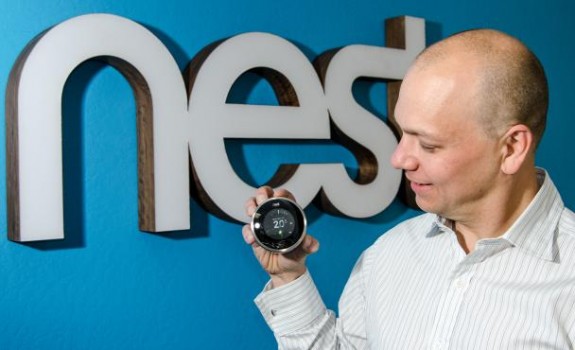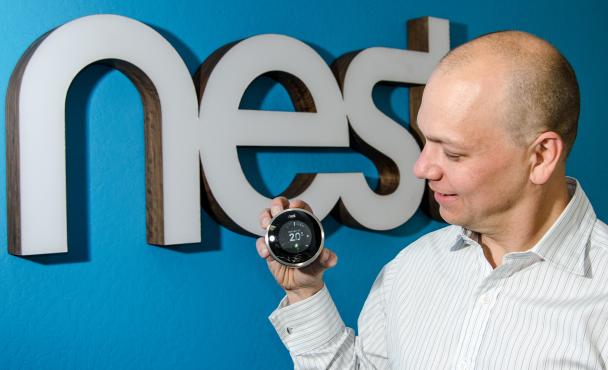Abstract
Forget everything you’ve read about why Google buying NEST is all about the Internet of Things. No, it’s not. This acquisition, for a mere $3.2bn in cash, is clearly rooted in the real economy. And here is why.
Foreword
Announced on January 14th, just a few days after the end of the CES in Las Vegas, the acquisition of NEST by Google had people talking a lot.

The press was fast to spread and comment the news. It’s not so common that Google makes a $3.2bn acquisition.
Then, many journalists and analysts tried to explain the meaning of this acquisition and to decipher the rationale behind it.
But I wasn’t really convinced by anything I’ve read, most of these articles provided explanations that were too obvious and too easy – not to mention some of them being very simplistic. So I allowed myself some time to think about, and now I think I have a pretty decent explanation.
Google confirms the huge potential of the Internet of Things? No.
One of the easy and obvious explanations one could read: By acquiring NEST, Google is making a big bet and investing in the nascent market of the Internet of Things.
We’ve all heard from the Gartner about the huge business opportunities that lie in the future market of the Internet of Things. Their analysts are bragging on projections up to 26 billion connected devices by 2020, thus creating a global market of $ 1.9 trillion (yes this is $1900 billion!) with an incremental income of more than $300bn. This is huge.
Though it’s true that this acquisition will allow Google to fully enter into the IoT industry, and to give them a voice and a seat in these working groups and consortia where they are not present today, this is not enough to explain such an acquisition by a bet on the future.
Considering the price of $3.2bn – and leaving aside the future integration, marketing and operation costs – to be break even NEST would have to sell a $250 thermostat to half of the 132 million US homes, which with their current ratios would translate into about $16bn of revenue and $3.3bn of margin. This is unlikely. It won’t happen in the short term or in the mid term.
Also, we should not forget that unlike an iPod or an iPhone, a NEST thermostat sells on an equipment market and not a replacement market: nobody is going to upgrade its domestic thermostat every 24 or 36 months. Moreover, one cannot consume or purchase additional content or services from a NEST thermostat. At least not yet, but you will see later in the article that NEST has some app store envy for it’s signature device.
Google enters the house? No.
Another very common yet very unconvincing theory: By acquiring NEST, Google finds a way to enter the home and will be able to know and learn everything about the lifestyle and consumption habits of its inhabitants.
Inevitably comes right after that the sensitive question of the personal data and all the fantasies that go around – which can be easily understood in the middle of the NSA psychodrama. This theory says that Google’s advertising business would then be able to place targeted ads based on this collection of domestic data.
Not only this is not possible because of the NEST Privacy Policies, but it is unclear how these data could tell more about our tastes and habits that this Android phone that lives in our pocket and follows us everywhere.
Of course, we could imagine some interesting scenarios by merging data from our agenda, from the weather forecasts and our home thermostat, all delivered via Google Now on your Android phone. OK, this could be interesting, but not THAT interesting.
There’s nothing really groundbreaking in here, and ultimately there is nothing in there as lucrative as Google’s current advertising business. The ad business is his real cash cow: some say it represents 120% of Google’s revenue and more than 60% margin, all other activities today being experiments and cost centers.
Home automation has been a topic for decades, even before the Internet. So why would 2014 be the year of home automation? Or may be 2015? May be it’s just the same way that some repeat every new year that it’s going to be “the year of mobile”.
Google strengthens its patents portfolio? No.
Another explanation we can read in the press: NEST has certainly applied for a large collection of patents and Google would like add them to its portfolio, in order to avoid potential legal and commercial issues in the future. May be.
But think about: Would Google pay $3.2bn just to acquire IP? One could argue that they’re a similar case with Motorola’s acquisition. Until now (1), the real benefits from this massive $12bn acquisition are that Motorola’s patent portfolio have created a shield allowing Google to develop Android without fearing trials or being slowed down by Patent Trolls.
Then why?
We end up running in circles and scratching our heads: But why did Google buy NEST? That’s the plan, if any?
Even Jean- Louis Gassé, a well-informed and famous former Apple employee, comes to the conclusion that maybe there isn’t a clearly defined plan, and maybe all this happened just because Google could do it.
Barry Rithholtz, from the Washington Post, says it may just be a defensive move, some kind of insurance policy – that they is finally not so expensive if you consider Google’s quarterly revenue and they cash flow. There’s certainly a bit of that, but ultimately the explanation lies elsewhere.
Jean-Louis Gassé also reminds us of some people commenting the acquisition saying that Apple should have acquired NEST rather than Google. I do not agree.
Beyond the design of the object, the excessive care and quality of the manufacturing and “Out of the Box experience” which is very Apple-ish, the rest of the big picture has much more in common with a pure engineering project a la Google.
If Apple had acquired NEST, they would have probably just offered the device shelf in their Apple Stores, while Google by contrast knows exactly what to do with NEST. And this changes everything.
Introducing the NEST Energy Services…
After doing some deep searches, I ended up finding interesting information, and in particular I heard about the NEST Energy Services, an offering that augments the NEST thermostats value proposition in a very logical way.
From there, we start to envision the big picture, and we understand that the ultimate purpose of the NEST thermostat is not to provide more comfort and help a home owner to save on his energy bills. No, once again, the real value of this smart connected thermostat is elsewhere.
It turns out that NEST has established trade agreements with several energy suppliers, and that the latter offer cash incentives to customers who agree to play the game.
What is the goal? The objective is to better control and regulate energy consumption.
The goal is to control and regulate the energy consumption not in a house, but on the scale of a city, a state or a country. It’s all about avoiding energy shortage and expensive prices during consumption peaks. During these peaks, the price of a kW can vary from 1 to 100, and it costs to both the homeowner, and the energy provider, because it’s a regulated market and the maximum price an energy utility can charge a consumer is capped (the difference in price is then supported by the energy supplier).
The NEST thermostat is the node sensor in every home that will enable energy suppliers to master of the Smart Grid without having to make deep investments and infrastructure changes.
Now we see it. The stakes are high, and every single home is concerned. This goes far beyond the fantasy about this overhyped Internet of Things market to be. This is real economy and real benefits.
Google and the energy market then?
By connecting the dots, the pattern starts to appear…
It is little known but there is a Google subsidiary called Google Energy LCC which has received all the necessary agreements from the FERC in order to be a player in the energy market, and to sell and buy power at market price. This fact is revealed in this interview (skip to 1’40”) .
Do you see the pattern now? All right, now you can read this article from April 2013 about NEST Energy Services and everything will be much clearer.
Beyond NEST
Lately, Google has also acquired more than half a dozen of robotics companies, including Boston Dynamics that is funded by ARPA military research funds and does really incredible things, and also another company called Deepmind, specialized in AI and very discreet about their research and what they really do. Oddly, all this has generated much less conversation than the acquisition of NEST. I suppose that this is a sign that the Internet of Things topic is on a peak of hype right now, may be it’s a CES effect.
Taking a step back and looking at this big picture, it still makes sense. It is consistent with what Google has accustomed us to: the use of technology in sometimes unexpected ways to solve common everyday life questions and problems, and to simplify recurring human tasks: From the driverless cars, to Google Maps, to domestic robots, to Google Flu trends or smart contact lenses, the keywords are simplification, automation and optimization.
To be continued…
Notes and references
(1) A couple of days after this article was first published in French on Jan 29th, Google confirmed that they had sold a part of Motorola Mobility assets to the Chinese company Lenovo. However, Google will keep a portfolio of more than 17,000 patents from Motorola. What is the amount of the sale? Something about $2.9bn. Well, it seems that Google has just gotten back what they paid for NEST…
This article was originally published in French on Diginomos. This is an English version for your convenience. Please let me know if you find typos or grammar errors in this text. Thx!

Pingback: Google rachète NEST pour 3.2 milliards de dollars : Pourquoi ?
Pingback: Google's NEST acquisition is not about the Inte...
Pingback: Nest, la valeur de l’expérience |
Pingback: Nest, the Value of Experience |
Pingback: (Archive) Pourquoi le rachat de NEST par Google ne signe pas l’entrée de Google dans l’IoT « Christophe Lauer
Comments are closed.